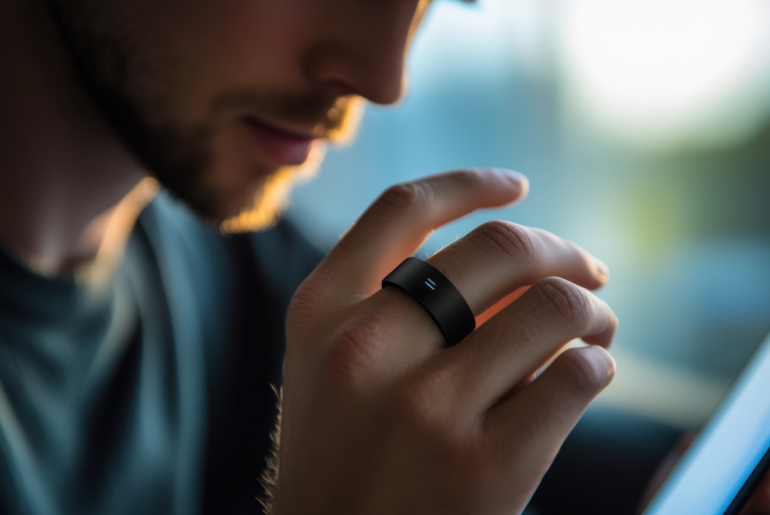As many casual tech observers might have recently seen, Samsung released a new device type at their latest Unpacked event (July 10th): the “Samsung Galaxy Ring”. This signals a shift in the Smart Ring space.
The Smart Ring space is currently dominated by Smart Ring producing specialists like Oura and Ultrahuman but now the larger brands are beginning to compete by incorporating rings into their existing ecosystems of devices. It also potentially marks the shift from Smart Rings being a small segment of the wearables technology landscape to becoming a main stay in the space.
In the last full year of data, 2023, IDC recorded Global Ring sales of 880,000 units, with Oura representing 80% and Ultrahuman in second with 12%. We are forecasting this to rise to 1.7 million in 2024 and 3.2 million in 2028, equating to a year-over-year growth rate of 29.5%. For comparison, the total global Smartwatch sales in 2023 were roughly 161 million devices, forecasted to rise to 175 million by 2028, an average year-over-year growth rate of 1.7%.
This reflects the greater maturity of the Smartwatch market and the lengthening replacement cycles of Smartwatches as the upgrades become more iterative. So, for now, Smart Rings will be a small but fast-growing part of the wearable device market. Get access to the latest performance data for the wearables market—including Smart Rings and Smartwatches—with IDC’s Wearables Devices Tracker. You can learn more about the product with this resource or see the data in action and explore more sample insights here.
The early reception of the new Galaxy Ring appears to be one of moderate interest, with consumers seemingly liking the new form factor the ring offers. The ring form does have a distinct advantage of being more sleek and less obtrusive than Smartwatches, which is especially significant when sleep tracking. Many Smartwatch wearers dislike wearing a watch to bed but would think nothing of keeping their rings on. There is also a subset of consumers, especially those with smaller wrists, that dislike wearing bulky Smartwatches like those offered by Apple and Samsung. Some brands, such as Garmin, do offer female specific slimmer designs with the Lily range of watches, but the ring format might be another option. We also have a significant section of the population who prefer the premium Analog watches, like your Rolex or Omegas.
From conversations in the industry, it is clear that many of the large players within the wearable devices space are watching Samsung Ring sales with interest, and are exploring the possibility of producing their own Smart Rings. So should the Galaxy Ring prove to be a success we will likely see many other players jumping into the market, like we saw with the release of the first Apple Smartwatches .
The Substitution Problem
Unfortunately for the Wearables market as a whole, Smart Rings look set to compete directly with Smartwatches as many of the features they offer are directly comparable. Take the Galaxy Ring, for example, offering sleep tracking, heart rate monitoring, activity tracking and wellness monitoring. These are all things offered by their Galaxy line of watches, and whilst Samsung has discussed their watches and Ring working together saying “Wearing the Galaxy Ring with a Galaxy watch, … will maximize its shared health features while also extending the Ring’s battery life”. From a consumer’s point of view, given the release price of the Samsung ring was $400 and a medium spec Galaxy watch can set you back the same amount; it leads us to question just how many consumers will have $800 burning a hole in their pockets, and a desire to get two devices that do essentially the same thing. Though the Galaxy Ring is priced comparably to its biggest competitor, Oura’s Ring 4, which has a base model price of $349, but requires a monthly $5.99 subscription. Samsung, as of now, hasn’t made any announcements of subscriptions being needed.
So, it appears inevitable that in the medium to long run Smart Rings will eat into the Smartwatch share of the wearables market. The extent to which they do so is yet to be determined, and there will undoubtedly be people out there who wouldn’t have bought a Smartwatch but will buy a Smart Ring.
Conclusions
Smart Rings are a device type that has the potential to flourish in the next few years; the extent to which it does will be determined by the number of big players that launch their own rings and if the largely positive reception continues. But as Smart Rings flourish, we will likely see that these wearable makers are, to some extent, taking market share from themselves. As their own Smart Ring sales rise their Smartwatch sales will likely fall. That all being said, bring on the Smart Ring revolution.




